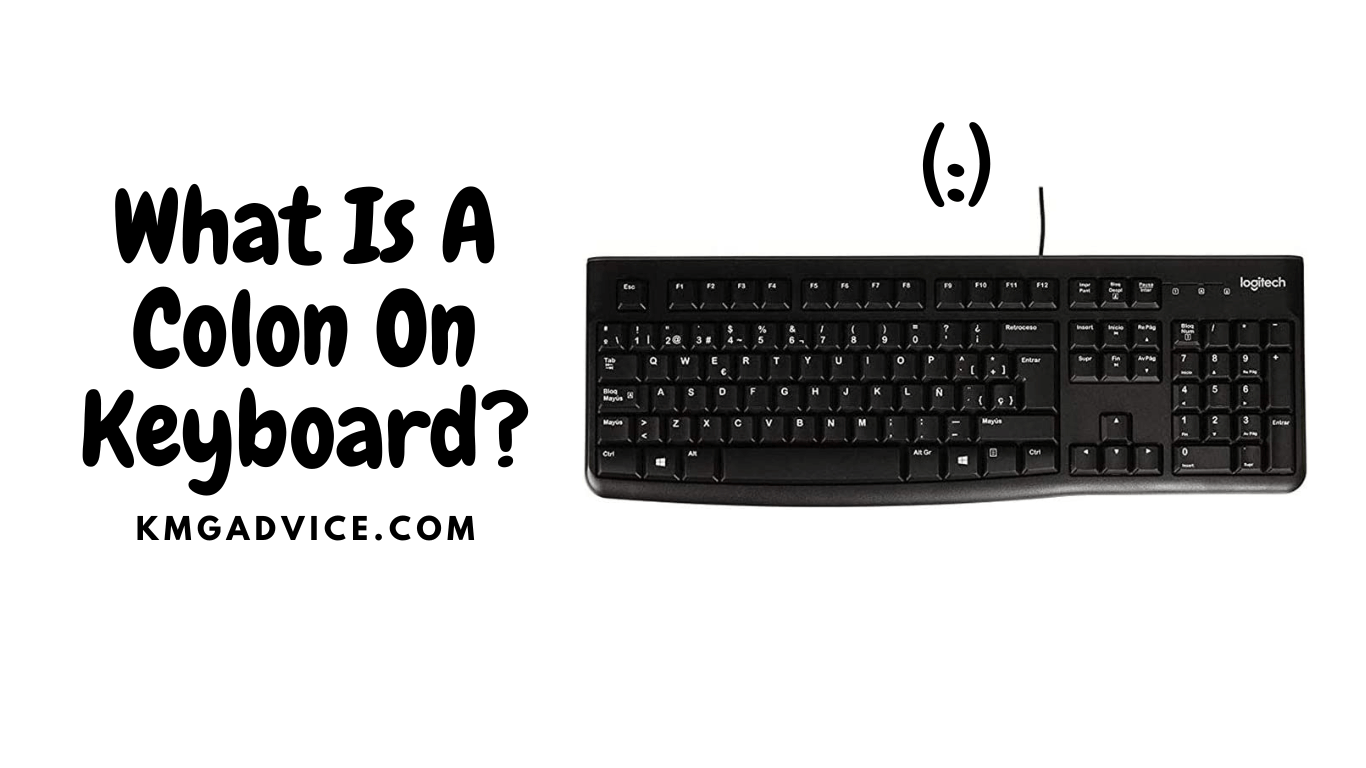This question of what is a Colon on keyboard compelled us to learn the importance of symbols in the digital world and the implication of punctuation in the grammar of English UK.
You always need to know the punctuation symbols to understand the exceptional sentences in content.
Nowadays, we are using additional symbols for assembling our sentences complete. By observing our needs, android devices, Apple devices, and mechanical keyboards start producing these symbols within the alphabet. They make everything easy for us, so you can use these symbols by clicking a key or tapping a character on keyboards. This guide will show you the importance of the colon in keyboards. It might help you to understand most easily.
Click To See Content Of This Post
What Is A Colon On Keyboard?
A Colon is a symbol of punctuation that comes with additional characters on keyboards. Basically, the Colon is a key on keyboards that work by pressing. It has its own identity in the collection of keys, and you can notice it by its mark. As every symbol in grammar and punctuation has a sign and shape, the Colon on the keyboard has a key assembled with its figure.
Shape
The colon is designed as two dots lined vertically with a space distance. This is the mark of the colon (:). You can recognize it on your keyboard with this sign (:). If you are using the keyboard on a cellphone so you can find it by the same character in the symbol section.
Where Is The Colon Located On Keyboards?
In mechanical and laptop keyboards’ main five-row layout, the third row contains the colon key after the L character key. This key is known as a semi-colon key, but every keyboard has multiple functions in one key, and you can type colon and semi-colon by pressing one key. Now the confusion is here how can we get a colon on the keyboard because the semi-colon is the default key.
Innovation Of Colon
Press the shift button whether it is placed on the left side or right side. Hold down the shift and press the semi-colon (;) key. The character of the colon will show you in your text. In the case of cell phones, open the symbol section and locate on below rows, you can find it.
How Do You Use A Colon?
The Colon is used for separating or breaking text and for other pursuits. Below are some examples described that can clarify your confusion about the uses of colons.
- After the heading of explanation, like if you want to explain a topic, you can use a Colon after the topic name.
- In the emphasis, like if you want to break someone’s talks and star relevant topic.
- In a dialogue, After the name of the speaker, you can put a colon before starting his dialogue.
- In the Quotation, After the name of the author or someone said, you can type a colon before writing the quotation.
- In the separation of book names, you can put a Colon between two books’ names if you are writing them in brackets.
Conclusion:
In this guide, we described the definition and importance of the colon in the era of mechanical and programmatic keyboards. We explain every suited answer to what is a colon on keyboard. You can also find the place of the colon on keyboards after reading.
FAQ about Colon On Keyboard
What is semicolon vs colon?
The semicolon (;) and colon (:) are punctuation marks that are used to indicate different types of information in written language.
The semicolon is used to separate independent clauses or to separate items in a list when the items themselves contain commas. For example:
“I like to run in the morning; it helps me clear my head.”
“I need to buy milk, bread, eggs; and cheese for the weekend.”
The colon, on the other hand, is used to introduce a list of items or to emphasize a statement that follows it. For example:
“I have three favorite fruits: apples, oranges, and bananas.”
“The reason for my success is clear: hard work and dedication.”
In short, a semicolon separates independent clauses or items in a list, while a colon introduces a list or emphasizes a statement that follows it.
How do you use a colon and semicolon example?
Here are a few examples of how to use a colon and semicolon in a sentence:
- Using a semicolon to separate independent clauses: “I like to run in the morning; it helps me clear my head.” In this sentence, the semicolon separates two independent clauses “I like to run in the morning” and “it helps me clear my head”.
- Using a semicolon to separate items in a list with commas: “I need to buy milk, bread, eggs; and cheese for the weekend.” In this sentence, the semicolon separates the last item “cheese” from the list of items “milk, bread, eggs”
- Using a colon to introduce a list of items: “I have three favorite fruits: apples, oranges, and bananas.” In this sentence, the colon introduces a list of items “apples, oranges, and bananas” that are the speaker’s favorite fruits.
- Using a colon to emphasize a statement that follows it: “The reason for my success is clear: hard work and dedication.” In this sentence, the colon emphasizes the statement “hard work and dedication” which is the reason for the speaker’s success.
It’s worth mentioning that the colon and semicolon are not as commonly used as other punctuations, and overuse can make the sentence hard to read. But when used correctly, they can help make the meaning of a sentence clear and more precise.
What are 3 ways to use a semicolon?
- To separate independent clauses: A semicolon is used to separate two independent clauses that are closely related in meaning, but are not joined by a conjunction. For example, “I like to run in the morning; it helps me clear my head.”
- To separate items in a list with commas: A semicolon is used to separate items in a list when the items themselves contain commas. For example, “I need to buy milk, bread, eggs; and cheese for the weekend.”
- To separate clauses in a complex sentence: A semicolon can be used to separate clauses in a complex sentence that has multiple clauses joined by conjunctions. For example, “She was tired from the long flight; however, she decided to go for a walk to stretch her legs.”
It’s important to note that a semicolon is not necessary to separate items in a simple list, a comma is enough. Also, overuse of semicolons can make the sentence hard to read and understand.
Do you use a colon before for example?
Yes, a colon can be used before “for example” or any other phrase that introduces an explanation or list of examples. The colon is used to indicate that what follows is an explanation or examples that relate to the information that came before it.
For example: “I have three favorite fruits: apples, oranges, and bananas.”
In this sentence, the colon introduces a list of items “apples, oranges, and bananas” that are the speaker’s favorite fruits.
Here’s another example: “The reasons for my success are clear: hard work, determination and perseverance.” In this sentence, the colon introduces a list of items “hard work, determination and perseverance” that are the speaker’s reasons for success.
It’s worth noting that the colon is not necessary to introduce a simple list, a comma is enough. Also, overuse of colon can make the sentence hard to read and understand.
Why would someone use a semicolon?
A semicolon is used to separate independent clauses or items in a list when the items themselves contain commas. Here are a few reasons why someone would use a semicolon:
- To indicate a closer relationship between independent clauses: When two independent clauses are closely related in meaning and are not joined by a conjunction, a semicolon can be used to indicate the relationship between them.
- To improve the readability of a sentence: A semicolon can be used to separate items in a list when the items themselves contain commas, improving the readability of the sentence and making it easier to understand.
- To show a pause or a stronger connection: A semicolon can be used to show a pause or a stronger connection in a sentence. Using a semicolon can indicate that the two independent clauses are related in meaning and should be given equal emphasis.
- To indicate a stronger separation: A semicolon can be used to indicate a stronger separation between two independent clauses in a sentence than a comma would.
- To create a more sophisticated or formal style: Semicolons can be used to create a more sophisticated or formal style in writing, and are often used in academic or professional writing.
It’s worth noting that the semicolon is not commonly used as other punctuations, and overuse can make the sentence hard to read. Therefore, it’s important to use it correctly and sparingly.





![Dell kb216 Keyboard Driver Error [SOLVED!]](https://kmgadvice.com/wp-content/uploads/2023/04/luca-bravo-XJXWbfSo2f0-unsplash-360x240.jpg)